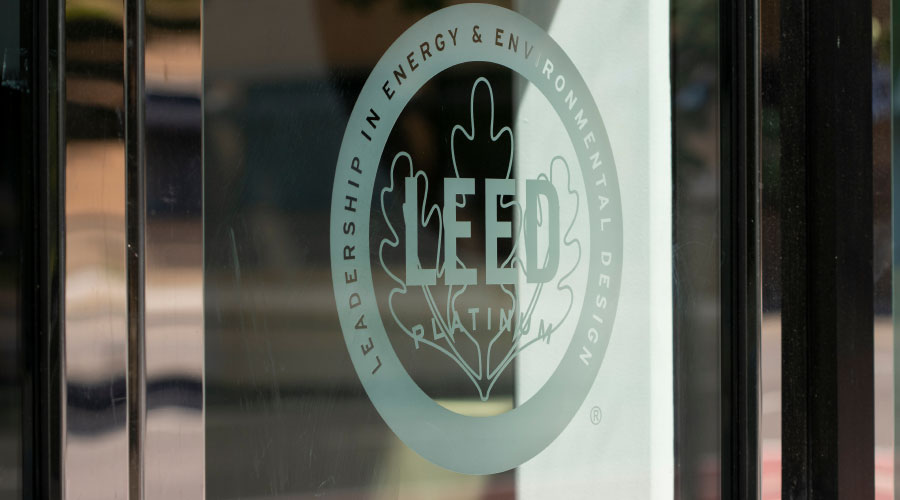Ten Key Steps to Resilience Planning for Buildings
Here's how to be proactive in incorporating resilience in your strategic facility planning.
With the impact of climate change continually increasing, it makes sense to be proactive about strategic resilience planning and preparation. Following are 10 recommendations to help ensure that your building is prepared to address climate change issues:
1. Conduct vulnerability assessments to determine how facilities, people, and resources could be at risk from climate-change events and subsequent hazards. This includes assessing emergency health and safety risk, as well as potential infrastructure impacts. In addition to planning for resilience, consider how you will manage an extreme event and recovery. For example, do you have facilities for building occupants to shelter in place in case of a severe storm?
2. Consider your needs. While there are specific strategies that all facilities can implement, some of them will depend on the requirements and vulnerabilities that are specific to your facility, based on geography, use, and other factors. For example, facilities located in Western United States may require adaptations to address drought and wildfires, while those on the East Coast might be concerned with rising sea levels combined with storm surges. As part of your assessment, consider the following questions:
• How resilient is your infrastructure? What are your greatest vulnerabilities to changing conditions?
• What climate preparedness or resilience measures do you have in place? How are they faring?
• What barriers are preventing you from conducting resilience planning? For example, are civil engineers and sustainability experts working together?
• Who are your stakeholders — both internal and external (e.g., local regulators)?
• What are the operational needs and your biggest concerns about business risk?
• What regulatory issues exist? Are you in compliance with permits and other requirements?
3. Make sure you are addressing incremental changes, such as rising seas levels, in addition to short-term extreme events, such as hurricanes.
4. Look at your facility holistically, where possible. For example, if you are upgrading infrastructure, you might want to move utilities, mechanical equipment, and toxic materials to elevated, flood-proof areas. You can reduce stormwater runoff by constructing pervious pavements in parking lots and flood proofing underground structures. When you’re upgrading infrastructure, you might consider installing new storm drains and backfill preventers to make your facility more resilient. Work with neighbors to identify common solutions.
5. Facility managers should combine resilience planning with climate mitigation/sustainability to maximize effectiveness. For example, you could combine renewable energy with green roofs to provide backup power during blackouts or brownouts as well as reduce greenhouse gas emissions. Natural wetlands, which help prevent flooding by collecting stormwater, could be incorporated alongside grassy swales, which enhance ground water infiltration.
6. Make sure you are aware of new regulatory developments and any resources or expertise in your local area. For example, The City of Boston now requires new buildings to complete a climate preparedness and resilience checklist. National, regional, and local grants might be available to provide funding to implement resilience measures to prepare for climate change.
7. Include all stakeholders in the process from the beginning to get their buy-in as well as to ensure that you are meeting their needs. For example, if your building has multiple uses, you can determine what is required to properly ensure the safety of all occupants and support business continuity. Communicate with your stakeholders throughout the resilience planning process and share results with them. For example, make sure you communicate emergency procedures to building occupants, and owners as well as to local officials.
8. Education is a key part of the process. Make sure your stakeholders understand the significance of resilience planning. Additionally, demonstrate to management how resilience planning and measures taken today to prevent damage can save money in the long term, and establish metrics to track resilience performance measures, such as decreased insurance rates. Conduct high-level economic risk assessments and scenario planning with your stakeholders to consider potential vulnerabilities from wind, heat, and water.
9. Make sure you have adequate insurance to cover the potential impact of climate change events, as well as secondary impact from flooding and other issues.
10. Collaborate on a macro level. Familiarize yourself with any available flood maps and climate projections for your area. Become aware of plans and measures that are underway at the neighborhood, municipal and regional levels. Reach out to the appropriate public officials to request these plans and discuss ways you might work together. For example, what plans are in place to ensure safe egress from your facility and neighborhood in the event of a natural disaster?
Related Topics:












